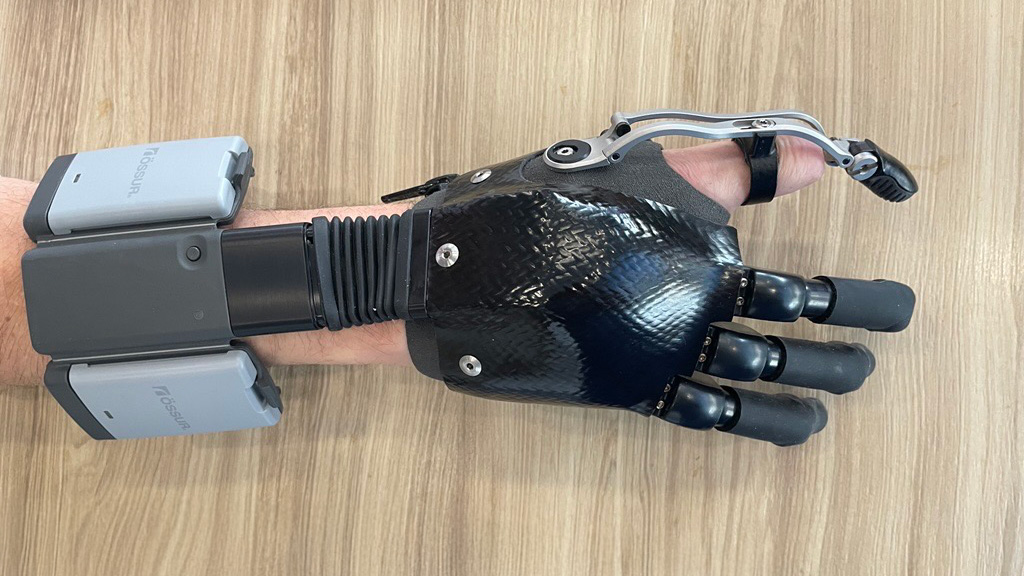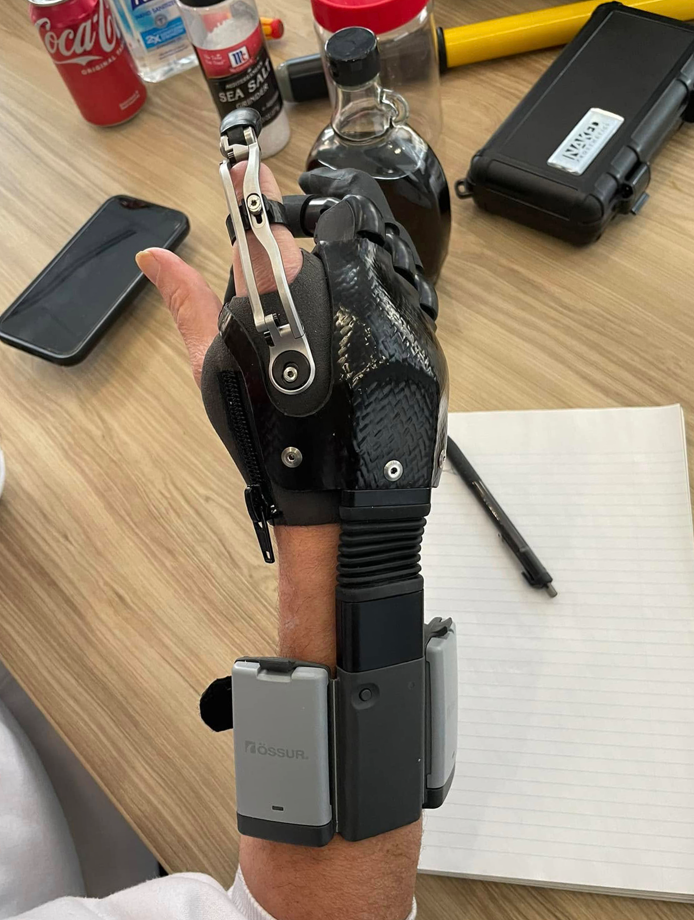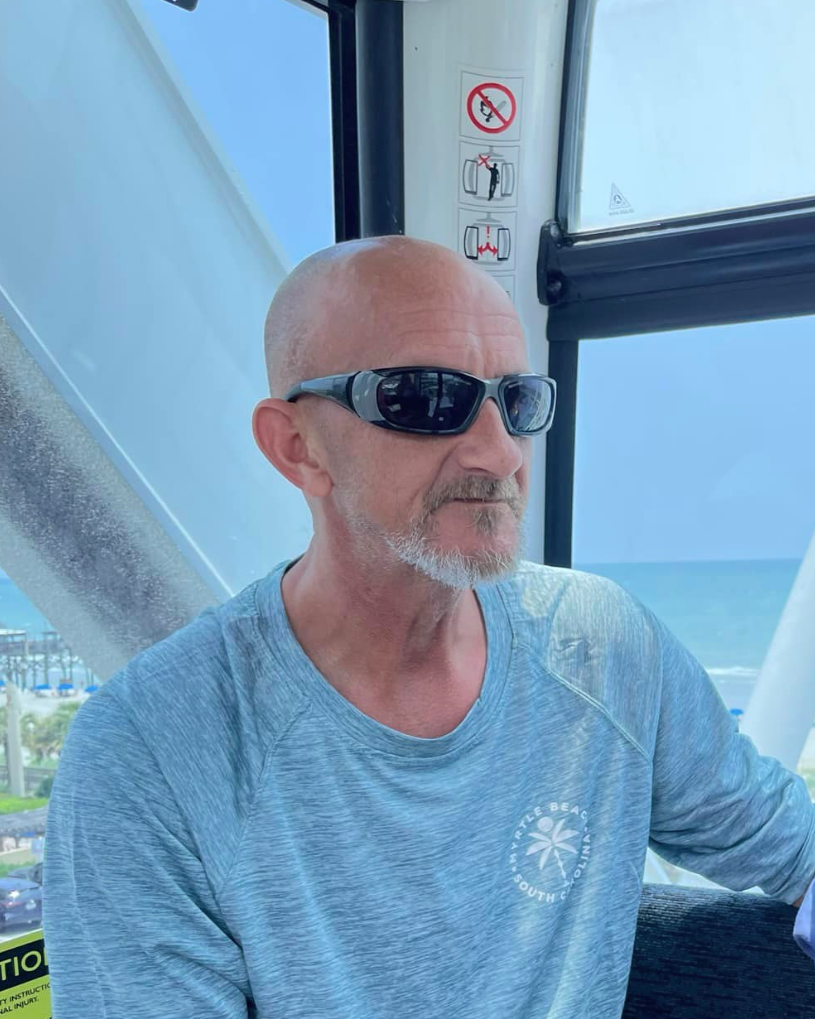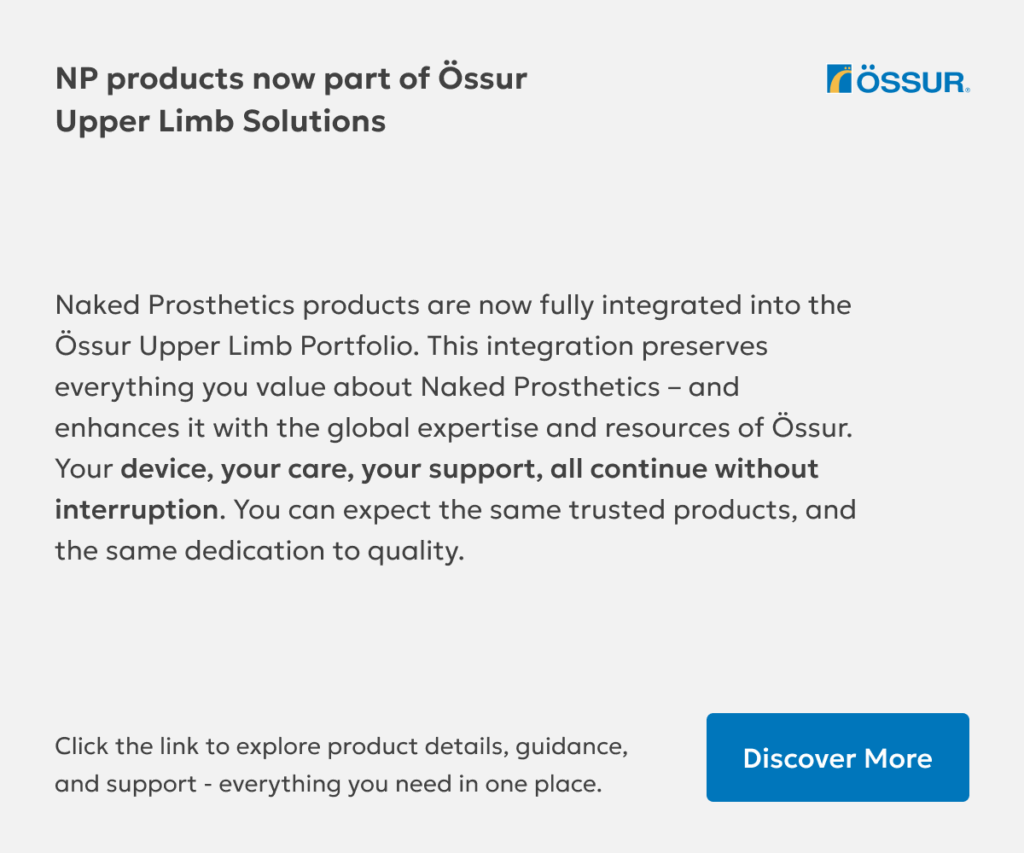In April of 2024, Tim Suttles’ life changed in an instant. He passed out while working and fell into a running table saw. “I didn’t realize how sick I was. I had a lightheaded moment, and just like that, every finger on my right dominant hand was cut, with only one remaining intact.”
Surgeons attempted a reattachment, but it wasn’t successful. A ray resection followed, and after months of therapy, it became clear that his remaining fingers wouldn’t function as needed. Eventually, Tim underwent what’s called the Starfish procedure, which helps prepare the hand for advanced prosthetics by moving certain muscles so they can naturally control the movement of each prosthetic finger.
As a construction professional and active dad, Tim was suddenly faced with the challenge of reclaiming his independence and rebuilding his life at home and on the job. With time, therapy, and the support of his loved ones, he’s begun that journey—and he’s discovering just how capable he can be with the right tools and mindset.
Athletic Roots, Strong Spirit
An athlete from a young age, Tim grew up playing basketball, baseball, and running track—activities that kept him physically active and mentally driven. After his injury, coordination in his non-dominant hand gave him a slight advantage during recovery. Still, learning to control a prosthesis came with its own challenges.
“When it happened,” Tim recalls, “it felt like my life and livelihood were over. But when I got the device for the first time, it kind of renewed my spirit.”

Value of Persistence
Tim is quick to acknowledge the role his support system played in helping him recover mentally and emotionally. “My family, my wife, my siblings, my parents—they have all been incredible. My wife didn’t want me to do anything. She was always calling trying to make sure I had help, but my therapist told her to stop calling and let me figure it out for myself,” he laughs.
Acquiring Tim’s device required a laborious and emotionally draining journey through the insurance approval process. His initial claim was denied outright. It wasn’t until he connected
with Opportunities for Ohioans with Disabilities that real progress began. Through persistence, advocacy, and multiple appeals, he finally received the coverage he needed.
“You can’t really put a price tag on your life or livelihood,” Tim says. “I’m glad we got it done.”
The Power of a Hybrid Solution
Tim’s wife, Leanne, documented much of his journey to regain function, including his time at Össur Academy in Dublin, OH, where his custom socket was made. This location not only serves as a fabrication site but also offers in-depth training on Össur’s Upper Limb Solutions. Tim had the opportunity to learn how to optimize the use of his device through personalized instruction and guided practice. The clinical sessions helped build his confidence, ensuring he had the tools and knowledge needed to succeed as he adapted to life with his new prosthesis.
Tim uses an MCPDriver (a Naked Prosthetics mechanical device that relies on the motion of the remaining digit) and three i-Digits (an externally powered myoelectric prosthesis from Össur) — a combination that allows him to handle a multitude of tasks.
The MCPDriver offers durable, precise control for stabilizing and gripping. Meanwhile, the i-Digits provide advanced programmable grips and powered motion, which Tim can control via an app on his phone. With this, he can set the hand to grip specific objects like a soda can, locking it in place so he doesn’t have to worry about dropping it.
“I can carry in grocery bags again,” he shares. “I can hold a soda can. I can have this hand free while the other securely holds something. That freedom is a big deal.”

Everyday Wins and Adaptations
Like many prosthesis users, Tim and his family have made simple modifications to their home and routines — starting with adaptive silverware and plans to switch round doorknobs to lever handles. He’s also excited to get back to playing games like cornhole, where the combined stability and precision of the MCPDriver and i-Digits offers renewed coordination.
Moving Forward
Tim has been wearing his device for a few months now and he is not done. He’s still learning and exploring what his device can do. With every grip, gesture, and task, he’s moving toward more independence and back to the things he loves.
As he put it, “I feel like I can start doing the things I used to do. With more practice, maybe I can get back into even more of it.”
As for others just starting their prosthetic journey, Tim has one piece of advice: “Be patient. It’s a process. But it’s worth it.”



